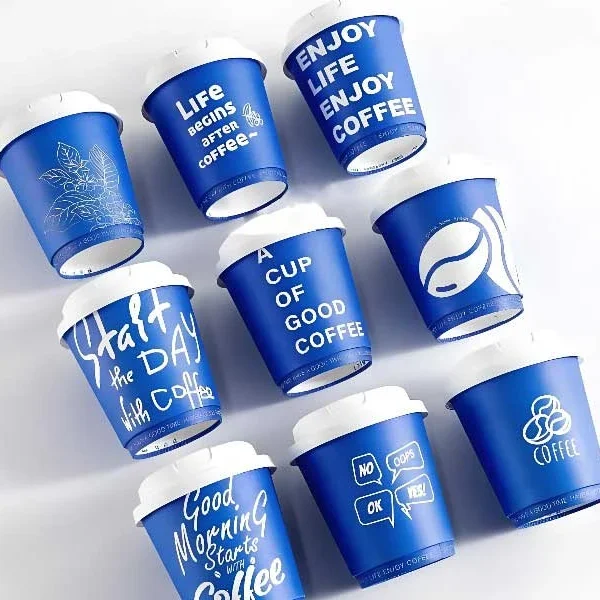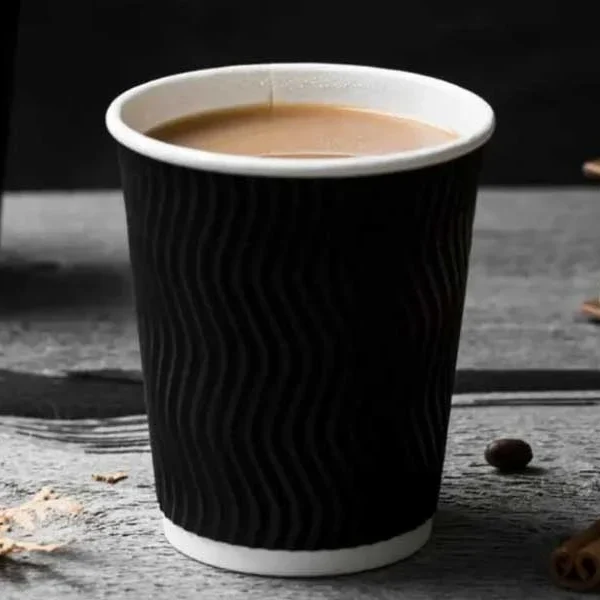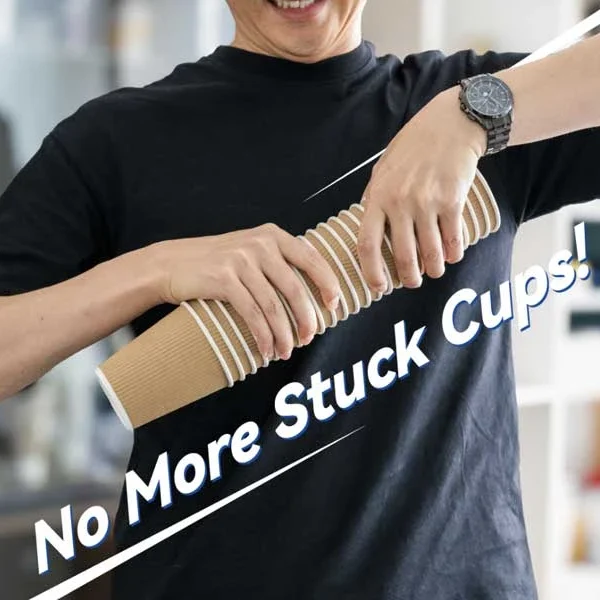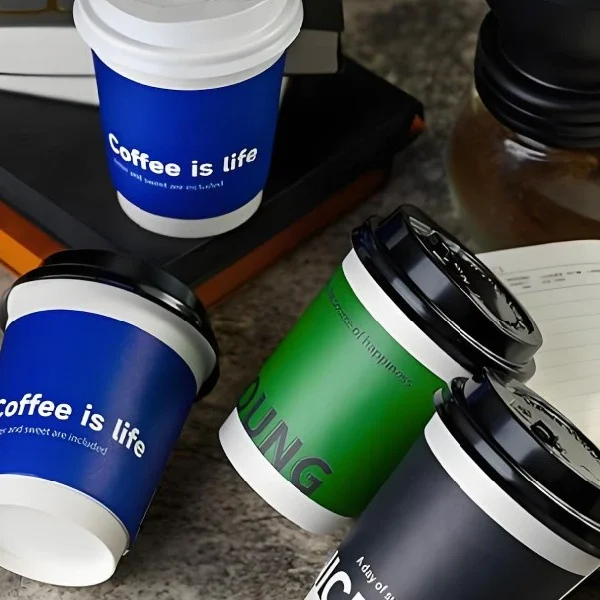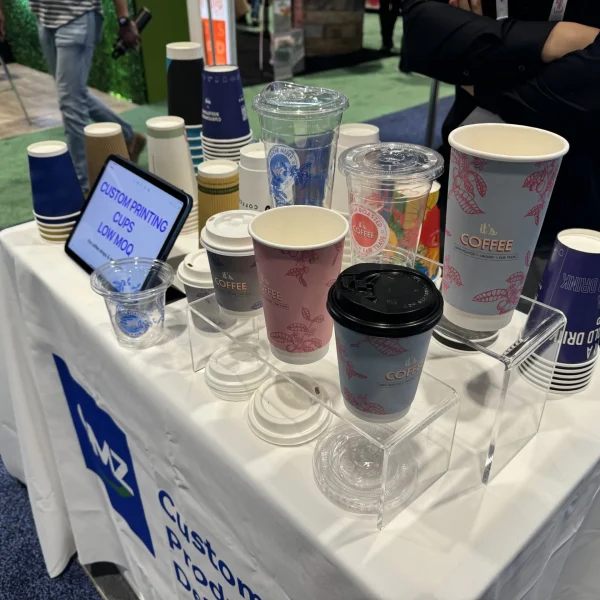Let’s take a closer look at PET (Polyethylene Terephthalate) cups, an unsung hero in the bustling food and beverage sector. As businesses like yours strive to meet the demand for quick and convenient solutions, PET cups stand as a valuable asset due to their strength, thermo-stability, and clarity – all distinct advantages in the food industry. This article offers a comprehensive exploration of PET plastic cups, shedding light on their key role in disposable food packaging.
Table of contents
What are PET cups?
PET cups are disposable cups made from polyethylene terephthalate (PET), a type of plastic commonly used in food and beverage packaging. PET is favored for its clarity, strength, and ability to be recycled. These cups are often used for cold beverages like soft drinks, iced coffee cups, smoothies cups, and water. They are popular in the food service industry due to their durability, transparency, and lightweight nature.
Key Characteristics
- Clear: PET plastic cups are clear, allowing the contents inside to be easily visible, which is appealing for beverages.
- Durable: PET is a strong and impact-resistant material, which helps prevent cracks and leaks.
- Lightweight: PET plastic cups are lightweight, which reduces shipping costs and makes them easy to handle for both consumers and businesses.
- Safe: PET is a food-safe material that does not leach harmful chemicals, making it suitable for beverage and food applications.
How are PET cups manufactured?
Manufacturing PET clear cups is a straightforward process. It begins with the production of PET resin, which is then heated and molded into the desired cup shape. The cups are cooled and inspected for quality control, ensuring they meet necessary food safety standards before hitting the marketplace.
With such ability to customize shape, PET cups can be made into common designs like flat-bottom or U-shaped plastic cups. Some plastic cup manufacturers, such as GMZ, even offer custom molds that can produce cups tailored to your desired shape and size.

Are PET cups recyclable?
The good news for environmentally conscious consumers is that PET cups are fully recyclable. By following correct disposal methods, these cups can be broken down, reprocessed, and transformed into new PET products. It rigidly follows the principle of circular economy, creating less waste.
Are PET cups compostable?
Despite their recyclability, PET cups are not compostable. Compostable materials are largely made up of organic matter that can decompose naturally, unlike PET. That said, heightened recycling measures for PET products are in place to combat its non-compostable nature.
Can PET plastic cups be custom-printed?
Yes. Custom printing on PET cups is completely feasible. It’s a popular feature implemented by various brands for marketing. Procedures are available to ensure the printing ink does not compromise the cup’s quality or the consumer’s health.

Comparing PET Cups with Other Disposable Plastic Cups
When it comes to disposable plastic cups, several materials are commonly used, including PET (polyethylene terephthalate), PP (polypropylene), and PS (polystyrene). How do PET plastic cups stack up against their peers?
PET Cups vs. PP Cups
PP or Polypropylene cups are another popular choice. While both PET and PP are robust and temperature-tolerant, PET scores higher on clarity, essentially making your beverages look more appealing to customers. PET cups are also more effortless to recycle compared to PP cups, contributing to lesser environmental impact.
PET Cups vs. PS Cups
PS or Polystyrene cups may be a lower-cost option, but they’re less durable compared to PET cups. PET clear cups excel in structural resilience and maintain their form and function even under stress, resulting in a better user experience. Besides, PET’s superior clarity and recyclability make it a more attractive option overall.
PET Cups vs. PLA Cups
PLA or Polylactic Acid cups are made from bioplastic derived from renewable resources like corn starch or sugarcane. They are biodegradable and compostable but need industrial facilities to decompose appropriately. On the other hand, PET cups can be easily recycled, and have superior strength, making them a more versatile choice.
| Attribute | PET | PP | PS | PLA |
|---|---|---|---|---|
| Clarity | High Transparency | Moderate | Low | High Transparency |
| Durability | High (Impact Resistant) | High (Tough and Flexible) | Low (Brittle, Prone to Cracking) | Medium |
| Heat Resistance | Low (Not suitable for hot beverages) | High (Suitable for hot beverages and microwave use) | Moderate (Foam provides insulation for hot beverages) | Low (Not suitable for hot beverages) |
| Environmental Impact | High (Widely Recycled, but petroleum-based) | High (Widely Recycled, but petroleum-based) | High (Widely Recycled, but petroleum-based) | High (Widely Recycled, but petroleum-based) |
| Cost | Moderate to High | Low to Moderate | Low (Cheapest) | Moderate to High |
✅ Clarity: PET = PLA > PP > PS
✅ Durability: PET = PP > PLA > PS
✅ Heat Resistance: PP > PS > PLA > PET
✅ Environmental Impact: PLA > PP > PET > PS
✅ Cost: PS > PP > PLA > PET
Final Thoughts
Navigating the world of disposable drinkware requires understanding the characteristics and environmental impacts of each option. PET cups, while not perfect, offer a versatile and recycling-friendly alternative that should not be overlooked. There is a cup for every need, and PET plastic cups serve many occasions with their balance of practicality and sustainability. Always remember to discard them mindfully. After all, the health of our planet depends on our choices.


